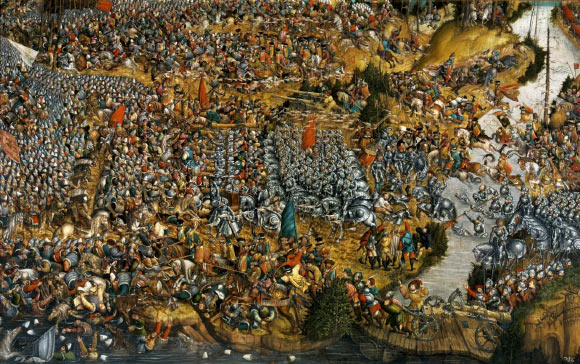The impact of inter-group conflict on population dynamics has long been debated, especially for prehistoric and non-state societies. In their work, scientists from the Complexity Science Hub, the University of Washington and the Leibniz-Zentrum für Archäologie consider that beyond direct battle casualties, conflicts can also create a ‘landscape of fear’ in which many non-combatants near theatres of conflict abandon their homes and migrate away.
“Globally, scientists have extensively studied and debated the presence and role of conflicts in prehistory,” said Dr. Daniel Kondor, a researcher at the Complexity Science Hub.
“However, estimating their effects, such as those on population numbers is still difficult.”
“This is even more complicated by potential indirect effects, like people who, out of fear, leave their homes or avoid certain areas.”
These indirect impacts of conflict could have caused significant, long-term population fluctuations in non-state societies, such as in Neolithic Europe (circa 7,000 to 3,000 BCE).
“Our model shows that fear of conflict led to population declines in potentially dangerous areas.”
“As a result, people concentrated in safer locations, such as hilltops, where overpopulation could lead to higher mortality and lower fertility.”
“The results from the simulation studies nicely match empirical evidence from archaeological field work, like for instance the Late Neolithic site of Kapellenberg near Frankfurt, dating to around 3700 BCE,” added Dr. Detlef Gronenborn, a researcher at the Leibniz Centre for Archaeology.
“Like there, we have many instances of a temporal abandonment of open agricultural land, associated with a retreat of groups to well-defendable locations and considerable investments in large-scale defense systems like ramparts, palisades and ditches.”
“This concentration of people in specific, often well-defended locations could have led to increasing wealth disparities and political structures that justified these differences,” said Dr. Peter Turchin, a researcher at the Complexity Science Hub.
“In that way, indirect effects of conflict might have also played a crucial role in the emergence of larger political units and the rise of early states.”
To simulate population dynamics in Neolithic Europe, the authors developed a new computational model.
To test their model, they utilized a database of archaeological sites, analyzing the number of radiocarbon age-measurements from various locations and time periods, under the assumption that this reflects the scale of human activities, and thus, ultimately, population numbers.
“This allows us to examine the typical amplitudes and timescales of population growth and decline across Europe. Our goal was for our simulation to reflect these patterns,” Dr. Kondor said.
“For the most complete picture possible, direct collaboration with archaeologists is immensely important.”
“This study is a great example of the potential that such interdisciplinary collaboration can have.”
The study was published in the Journal of the Royal Society Interface.
_____
Dániel Kondor et al. 2024. Landscape of fear: indirect effects of conflict can account for large-scale population declines in non-state societies. J. R. Soc. Interface 21 (217): 20240210; doi: 10.1098/rsif.2024.0210
This article was adapted from an original release by the Complexity Science Hub.

